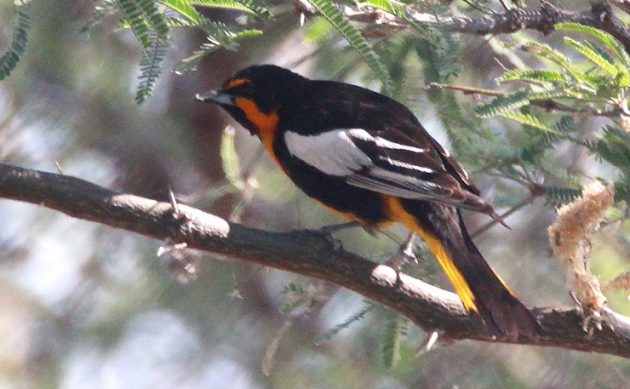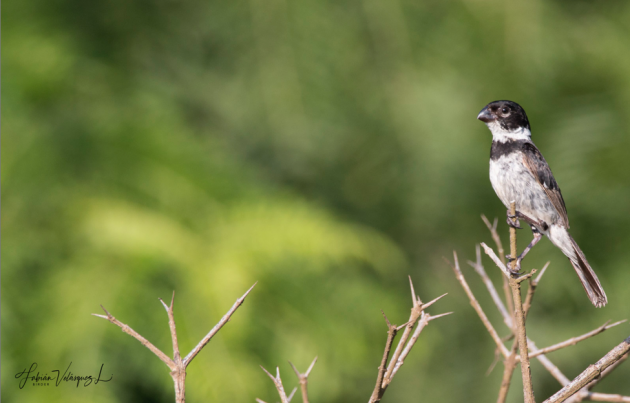
I suspect that most non-birders don’t particularly like the word “split”, since the first thing that it brings to mind is perhaps a bad end to a romance, or in the worst case, a divorce. For birders, however, a split can be a decidedly positive thing, producing that serendipitous wonder, the armchair lifer. For, in birder lingo, a split occurs when subspecies are determined to be, in fact, entirely separate species. If you happen to have seen both species, your life list can increase without you even leaving the house.
Splits were once a much more subjective determination, based on differences in appearance, vocalizations, habits, and breeding preferences. Now, splits are more likely to result from objective genetic studies. (Two former species can also be joined into one, the same way. We call this a “lump”. But hey, this is 2020. Do we really need to talk about sad events?)
For those of us with the great good fortune to bird in Latin America, or other less-studied biological regions, my experience suggests that we are much more likely to benefit from the new species created by such splits. Much less study has been devoted to species outside of the most-developed world, which leaves a much greater possibility of new discoveries and determinations. For example, almost every year my life list is impacted directly by AOS splits and renamings. I doubt that would be true if I still lived in California.
For example, it wasn’t until this year that the Mallard, with its strongly differentiated males and females and semi-migratory habits, was definitively separated from the non-migratory Mexican Duck, in which males and females are almost identical. (And there was great rejoicing thoughout the land!) I have seen Mallards in places as distant as San Francisco and Munich. But you pretty much must come to Mexico to see the Mexican Duck, which I see every time I go to our nearest lake.




The situation is similar with the migratory Bullock’s Oriole, which is a common winter visitor here, and our resident Black-backed Oriole. There is an interesting story behind these species: The Bullock’s Oriole is itself the product of a split, when in 1995 the western race of the Northern Oriole was given that name, while the eastern race was renamed the Baltimore Oriole. Eventually, the same occurred with the Black-backed Oriole, which was originally considered a subspecies of the newly-christened Bullock’s. And here is a fascinating twist to this story: genetic studies have now shown that the Bullock’s Oriole was never that closely related to the Baltimore Oriole, but is very closely related to the Black-backed Oriole. Bullock’s Oriole, once considered the same species as the Black-backed Oriole, is actually more closely related to Mexico’s Streak-backed Oriole.



I continue to hope that history will someday repeat itself with the House Wren group. Here in Michoacán, I can easily see two kinds of House Wrens. From October through March, a mousy-gray “Northern” House Wren visits my garden every day, and I can also see this visitor in a wide variety of other sites. But in Michoacán’s deep woods, the richly colored “Brown-throated” House Wren is a year-round presence. I have never seen a “Brown-throated” House Wren near human settlements. Like the above species, these varieties differ in appearance, vocalizations, habitat, and migration patterns. But, so far, the split has not occurred. (There is a third subspecies that occurs from southeastern Mexico through South America which I have yet to see.)


A couple of weeks ago, I mentioned how the difference between the two species that used to be considered subspecies of the White-collared Seedeater led me to find my best Mexican birding buddies. As you can see, it is not hard to tell between the now-split species. (That’s also a Cinnamon-rumped Seedeater up by the title of this post.)


The examples go on and on. The Clark’s Grebe was split from the Western Grebe in 1985; our grebes here are Clark’s, but I have seen Westerns in southern California. Our Transvolcanic Jay was only split from the Mexican Jay in 2011; there is pressure to split the latter species into as many as three species more. The Woodhouse’s Jay I once saw in Guanajuato state did indeed look quite different from the California Scrub-Jays of my youth, although they were once considered a single species. And the Mexican Violetears I see in the mountains around Morelia no longer share a single species (“Green Violetear”) with their Central American relatives.




Which also leaves me waiting for one of my most hoped-for splits: Could they please, please split the “Olive-backed” Towhee from its Spotted Towhee species? (No surprise here: the Spotted Towhee species was also the product of a split, from what is now the Eastern Towhee.) Its vocalization and coloration are, of course, quite different from those of the northern subspecies. But the greatest difference from its northern relatives is kind of a dealbreaker. Our Olive-backed Spotted Towhee, you see, has no spots.














Leave a Comment